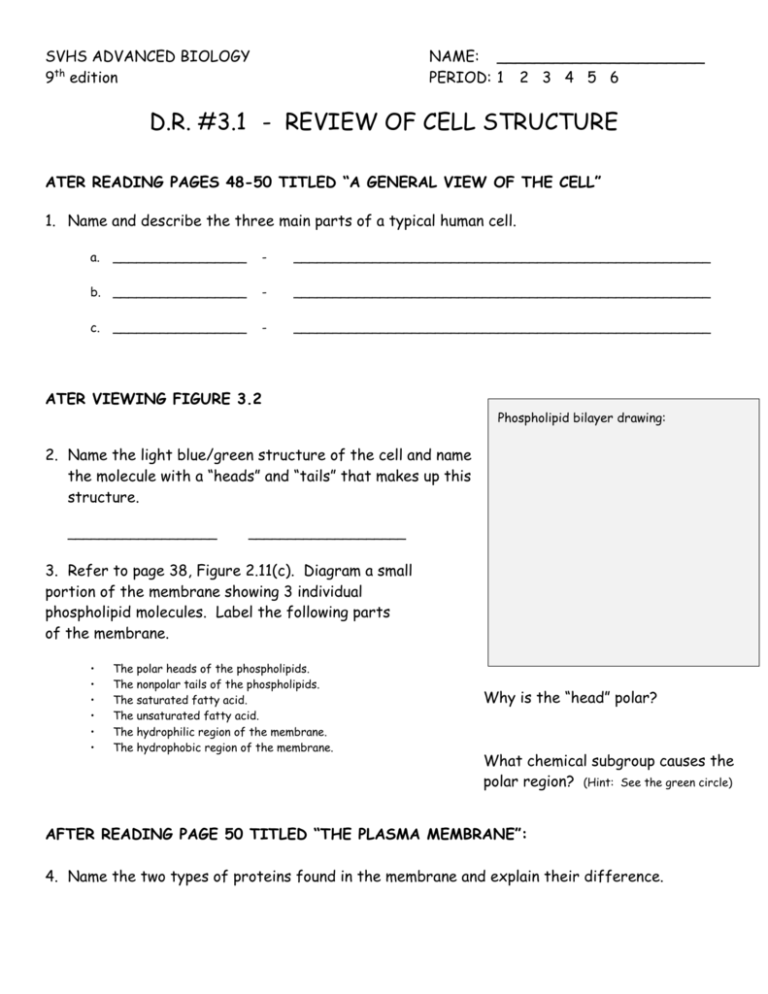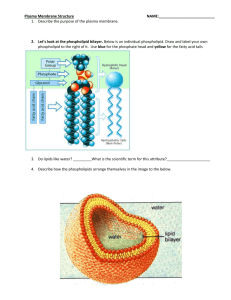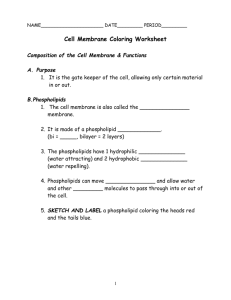D.R. 3.1 - Plasma Membrane 9th ed
advertisement

SVHS ADVANCED BIOLOGY 9th edition NAME: ______________________ PERIOD: 1 2 3 4 5 6 D.R. #3.1 - REVIEW OF CELL STRUCTURE ATER READING PAGES 48-50 TITLED “A GENERAL VIEW OF THE CELL” 1. Name and describe the three main parts of a typical human cell. a. _________________ - _____________________________________________________ b. _________________ - _____________________________________________________ c. - _____________________________________________________ _________________ ATER VIEWING FIGURE 3.2 Phospholipid bilayer drawing: 2. Name the light blue/green structure of the cell and name the molecule with a “heads” and “tails” that makes up this structure. ___________________ ____________________ 3. Refer to page 38, Figure 2.11(c). Diagram a small portion of the membrane showing 3 individual phospholipid molecules. Label the following parts of the membrane. • • • • • • The polar heads of the phospholipids. The nonpolar tails of the phospholipids. The saturated fatty acid. The unsaturated fatty acid. The hydrophilic region of the membrane. The hydrophobic region of the membrane. Why is the “head” polar? What chemical subgroup causes the polar region? (Hint: See the green circle) AFTER READING PAGE 50 TITLED “THE PLASMA MEMBRANE”: 4. Name the two types of proteins found in the membrane and explain their difference. 5. Most plasma membrane proteins are glycol proteins. How are they different than regular proteins? 6. Draw an arrow to and label the following structures: • Phospholipid bilayer • Polar head • Non polar fatty acids • Integral protein • Peripheral protein • Cholesterol molecules 7. Name the types of materials that will and will not pass through the plasma membrane. Will pass through membrane Will not pass through the membrane 8. Give the functions for the following proteins found in the plasma membrane: PLASMA MEMBRANE PROTEIN ION CHANNEL TRANSPORTER ENZYMES CELL IDENTITY MARKER INTEGRAL OR PERIPHERAL FUNCTION








